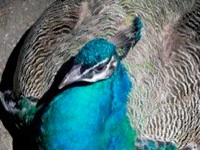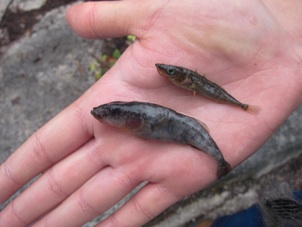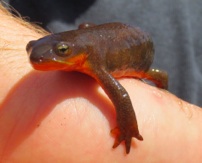Ecological & evolutionary genetics of three-spine stickleback
My PhD work aims to characterize the genetic basis of adaptation in the three-spine stickleback (Gasterosteus aculeatus) to predation and other sources of divergent selection. The purpose of this work is to further understand the general mechanisms that underlie genetic variation, adaptation in novel or changing environments and speciation.
The stickleback that I will be using in my experiments, are found in the coastal freshwater lakes of southern British Columbia. In five of these lakes, it appears that sympatric benthic and limnetic morphs have formed multiple times independently in this region. These benthic and limnetic stickleback exhibit many parallel changes in morphology, behaviour and ecology.
The presence or absence of certain fish predators appears to be a good predictor of whether or not these species will be found in a given lake. Thus, we believe that predation has played an important role in the divergence of these stickleback. To investigate the genetic basis of morphological adaptation to predation, I will be conducting a large scale pond experiment at UBC. This experiment will examine whether cutthroat trout (Oncorhynchus clarkii) are an important source of divergent selection on sympatric stickleback. Another aspect of this predation experiment is to determine the ecological consequences associated with predation.
I am also keen to investigate how species interactions affect adaptation and speciation. In particular I would like to know how species interactions at the microbial level may influence adaptation to novel environments. To investigate this, I plan to use next-generation sequencing technology, in order to determine how microbial communities associated with stickleback (in their gut) differ between populations inhabiting divergent environments.
Sensory basis of mate choice
Colouration influences mate choice in many species and often has been shown to be a reliable proxy for male quality. However, the molecular basis of female preferences for colour traits and indeed most male secondary traits in many species is poorly understood.
In the guppy (Poecilia reticulata), a model species for the study of sexual selection, females often prefer the most colourful males. Little is known about colour vision in this species. My M.Sc work exploited the technique of in situ hybridization to characterize the expression patterns of cone opsins (the genes responsible colour vision) across the surface of the retina in this species, to give further insight into the visual capacity of guppies.
I am continuing with some of this opsin work in the threespine stickleback. My work will focus on determining how visual sensitivity differs among stickleback populations inhabiting divergent spectral environments.
















